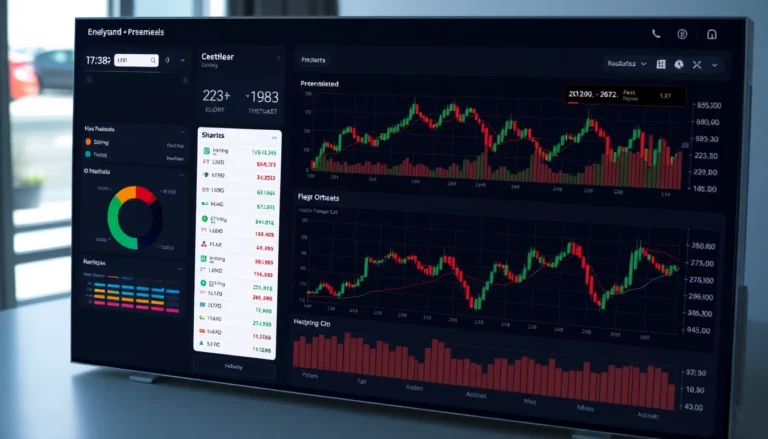Understanding the Role of a Contractor
The term contractor encompasses a broad spectrum of professionals and companies responsible for executing construction and renovation projects. At its core, a contractor is a person or entity that performs work under a contractual agreement, ensuring that specific project goals—such as building, restoration, or repair—are completed on time, within budget, and according to quality standards. Their role is pivotal in translating architectural designs and client visions into tangible structures or improvements. Whether it is a large-scale commercial development or a small residential remodel, contractors take charge of managing resources, labor, materials, and compliance requirements to deliver successful outcomes.
Definitions and Types of Contractors
Understanding what constitutes a contractor begins with recognizing the different types and their specific responsibilities. According to Merriam-Webster, a contractor is “one that contracts or is party to a contract,” often involved in erecting buildings or providing supplies and services. In the construction industry, this definition expands to include diverse categories:
- General Contractors (GCs): These are overseeing professionals responsible for the overall management of a construction project. They coordinate various subcontractors, manage schedules, procure materials, and ensure compliance with building codes and safety regulations.
- Subcontractors: Specialists hired by the general contractor to perform specific parts of the project, such as electrical, plumbing, roofing, or drywall work. They possess expert knowledge in their respective trade areas.
- Independent Contractors: Often self-employed, these individuals or small firms may undertake specific tasks or smaller projects. They typically work under their contractual terms, offering specialized services.
- Specialty Contractors: Focused on specific segments like HVAC, paving, or landscaping, they bring expertise that is critical for certain phases of construction projects.
The distinctions among these categories influence project planning, legal responsibilities, and liability considerations, making it essential for clients to understand their scopes when hiring.
Key Responsibilities in Construction Projects
Contractors serve as the central hub of a construction or renovation project, bearing a broad set of responsibilities that demand technical skill, leadership, and strategic planning. These include:
- Project Planning and Coordination: Developing detailed schedules, sequencing tasks, and ensuring that all involved parties—from architects to suppliers—work harmoniously toward common milestones.
- Resource Management: Procuring quality materials, scheduling labor, and managing subcontractors to optimize productivity while controlling costs.
- Compliance and Permitting: Ensuring that construction activities adhere to all relevant zoning laws, permits, and building codes to prevent legal issues and project delays.
- Quality Control: Supervising work quality, inspecting phases of construction, and resolving issues proactively to meet safety standards and client expectations.
- Financial Oversight: Managing budgets, issuing invoices, and controlling costs to ensure the project remains financially viable.
- Safety Management: Implementing safety protocols to protect workers and the environment, reducing the risk of accidents and liabilities.
Effective contractors excel in managing these responsibilities simultaneously, often under tight deadlines and budget constraints, necessitating a blend of technical knowledge and managerial acumen.
Differences Between General and Subcontractors
While both general contractors and subcontractors are integral to construction projects, their roles differ substantially. The general contractor acts as the project’s primary manager, holding the contractual agreement with the property owner. They oversee the entire consensus, from initial planning to project completion, and are ultimately responsible for delivering the finished product. Conversely, subcontractors focus on specific trades or tasks assigned by the general contractor. They possess specialized skills and are contracted for their particular expertise.
For example, in a home renovation, the general contractor might coordinate the entire remodel, engaging subcontractors for plumbing, electrical wiring, or roofing. The subcontractors then execute their components, working under the general contractor’s supervision. The delineation ensures that specialized tasks are handled efficiently and professionally, minimizing errors and optimizing workflow.
Understanding these distinctions helps clients manage expectations, negotiate contracts, and ensure accountability throughout the project lifecycle.
Factors to Consider When Hiring a Contractor
Licensing, Certification, and Insurance
Choosing the right contractor begins with verifying their legal and professional credentials. A reputable contractor must possess valid licenses issued by state or local authorities, demonstrating compliance with regulatory standards. Licensing often requires passing exams, providing proof of experience, and maintaining ongoing education.
Besides licensing, certifications from recognized industry bodies can signify a contractor’s commitment to quality, safety, and professionalism. Certifications such as OSHA compliance, LEED accreditation, or specialty trade licenses reassure clients of their expertise.
Insurance coverage is equally critical. A trustworthy contractor should carry comprehensive liability insurance, workers’ compensation, and property damage coverage. These safeguards protect both parties against unforeseen incidents, legal liabilities, and financial losses. Always request proof of insurance and verify its validity before engaging services.
Experience and Portfolio Evaluation
Experience directly correlates with the ability to foresee potential challenges and deliver quality results. A seasoned contractor with a diverse portfolio demonstrates adaptability and mastery of various project types. When evaluating a contractor’s experience, consider:
- Number of years in business
- Scope of completed projects similar to yours
- Client testimonials and references
- Case studies showcasing problem-solving and innovation
Request the contractor’s portfolio, preferably with before-and-after visuals, detailed project descriptions, and client feedback. Contact previous clients to gauge satisfaction, adherence to timelines, and responsiveness to issues. A well-documented track record provides peace of mind and helps mitigate risks.
Cost Estimates and Contract Terms
Transparent and detailed cost estimates are fundamental in choosing a contractor. Request multiple bids to compare pricing, scope inclusions, and payment schedules. Be wary of bids that are significantly lower than others, as they may reflect overlooked costs or inferior quality.
An explicit contract should outline scope of work, milestones, completion dates, payment terms, change order procedures, warranties, and dispute resolution methods. Carefully review all clauses and seek legal advice if needed. Clear contracts prevent misunderstandings and protect results over the project’s duration.
Remember, the lowest price does not always equate to the best value; quality, reliability, and experience are equally vital considerations.
Best Practices for Managing Contractor Relationships
Communication and Project Updates
Open, consistent communication forms the backbone of a successful project. Establish regular updates through meetings, emails, or project management tools. Clarify points of contact and preferred communication channels from the outset. Promptly address issues, postponed deadlines, or unexpected complications to maintain transparency and trust.
Utilize technology—such as digital project dashboards or mobile apps—to facilitate real-time updates, document sharing, and progress tracking. This proactive approach reduces misunderstandings and enables swift decision-making.
Setting Clear Expectations and Goals
Define project goals explicitly, including quality standards, timelines, budget constraints, and safety protocols. Drafted in the contract and reinforced during meetings, clear expectations prevent scope creep and ensure all parties are aligned. Use visual aids like plans and schedules to communicate expectations visually.
Establish key performance indicators (KPIs) such as milestones achieved, quality benchmarks, and safety compliance. Regularly review these KPIs with the contractor to measure progress objectively.
Handling Disputes and Change Orders
Despite best efforts, disputes or change requests are common. Approach these situations with a focus on collaborative resolution, referencing the original contract, and documented change processes. Formal change orders should specify scope alterations, associated costs, and revised timelines to prevent disagreements.
Implementing a dispute resolution mechanism—mediation or arbitration—within the contract can expedite conflict settlement. Maintaining professionalism and data-driven documentation facilitates a smoother resolution process.
Legal and Compliance Aspects
Understanding Contracts and Warranties
A comprehensive contract clearly defines responsibilities, payment schedules, warranties, and liabilities. Warranties typically cover materials and workmanship, providing assurance of lasting quality. Ensure warranties are explicit, specify coverage duration, and detail procedures for claims.
Legal review of contracts is advised to avoid ambiguities and ensure enforceability. Understand the scope of your contractual rights and responsibilities to prevent legal complications post-completion.
Permits and Building Code Compliance
Construction projects require permits from local authorities. Contractors should assist in obtaining necessary documents and ensure work aligns with building codes and zoning laws. Non-compliance can lead to fines, delays, or the need for costly modifications.
Verify that the contractor stays updated with current regulations and permits the project accordingly, safeguarding your investment and legal standing.
Ensuring Quality and Safety Standards
Implement quality assurance protocols, including regular inspections and adherence to safety standards such as OSHA regulations. Proper safety management not only protects workers but also minimizes downtime and legal liabilities. Encourage the contractor to demonstrate ongoing safety training and compliance documentation.
Maximizing Project Success with the Right Contractor
Timeline and Budget Management
Effective management involves setting realistic schedules and controlling costs through diligent planning and monitoring. Use project management tools to track progress, expenses, and resource allocation in real-time. Build contingency funds into budgets to manage unforeseen costs.
Regular review meetings allow for adjustments and ensure that the project stays on track, avoiding costly overruns or delays that can compromise quality.
Evaluating Project Outcomes
Post-completion, conduct comprehensive evaluations to assess whether the project meets predefined goals and standards. Client feedback, inspection reports, and performance metrics help identify strengths and areas for improvement.
This analysis informs future projects, enabling continuous improvement and reinforcing relationships with reliable contractors.
Long-term Maintenance and Support
The relationship with your contractor shouldn’t end at project completion. Establish ongoing support and maintenance agreements, especially for systems or structures requiring regular inspections and repairs. A reputable contractor often offers warranties or service plans that ensure longevity and optimal performance of your investment.








